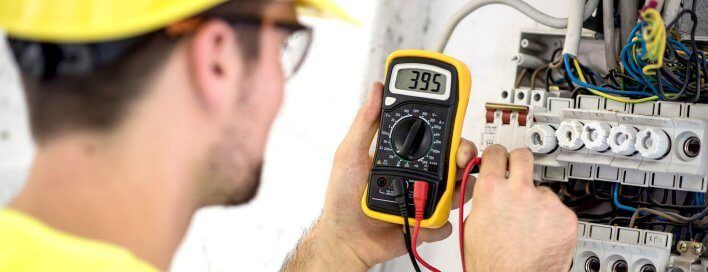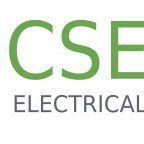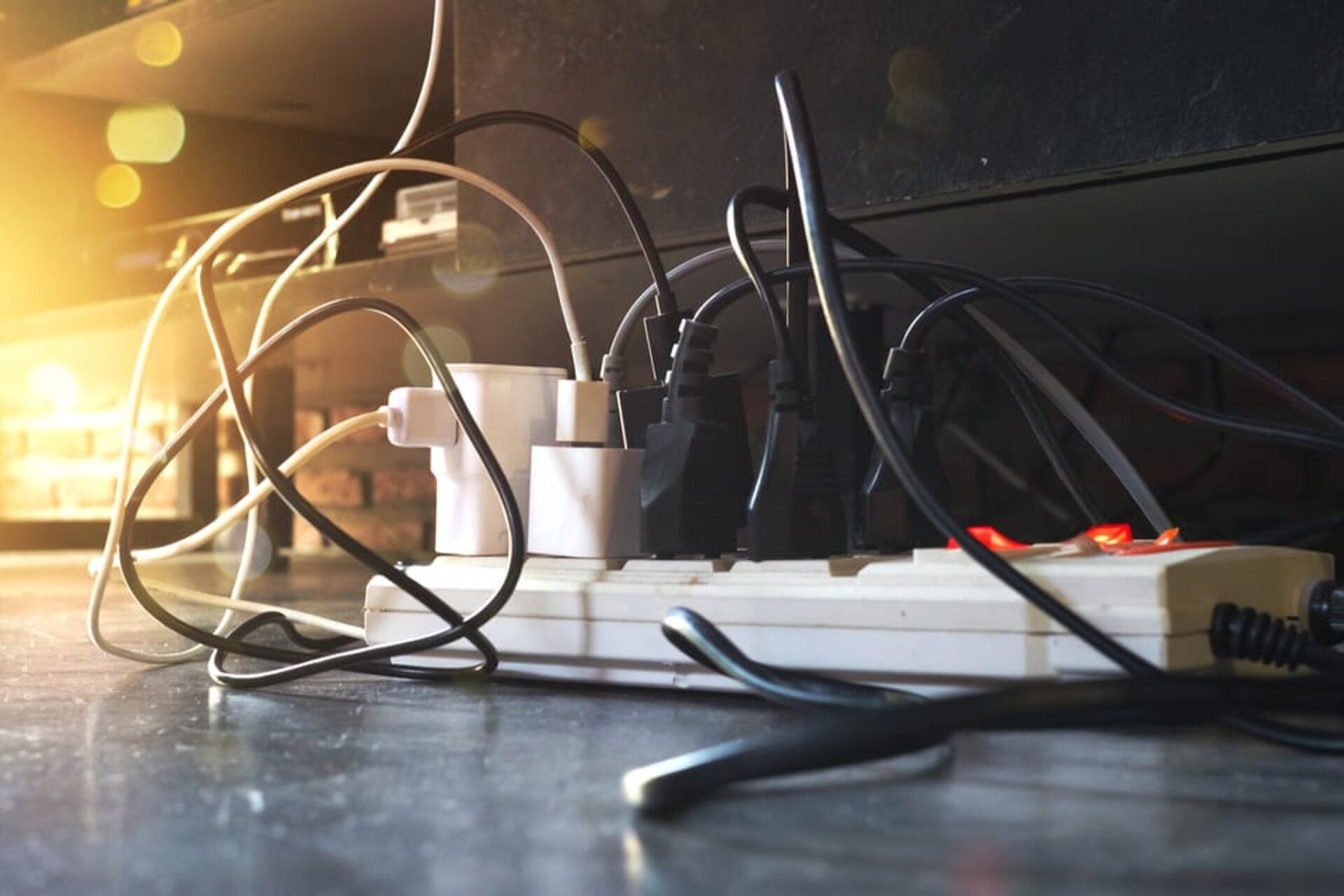Why should your company test the hard wiring
Electrical Testing Safety Explained

In the realm of electrical systems, the foundation of any building’s safety and efficiency hinges on its hard wiring. Regular fixed-wire testing and electrical testing and inspection are not just good practices; they are essential for identifying hidden faults and preventing electrical failures that can lead to costly downtime and legal penalties. By ensuring the integrity of your distribution board testing, you can safeguard against electrical shocks and fires, while also protecting your business and employees. Don’t wait for a crisis to strike—the importance of testing the hard wiring within your commercial building cannot be overstated.
Understanding hard wiring: The backbone of your building’s electrical system
Hard wiring, the silent highway of electricity, is the essential infrastructure that powers every corner of your building. It connects the main electrical supply to various components, such as lighting, heating, and appliances, ensuring a reliable and steady flow of power. This intricate network of wires and cables is hidden within the walls and ceilings, making it a crucial but often overlooked aspect of your building’s functionality. Without a well-maintained hard wiring system, the risk of electrical failures and downtime increases, which can disrupt business operations and lead to significant financial losses.
Regular fixed wire testing is a vital practice that helps identify hidden faults and potential hazards within the electrical system. These tests can detect issues such as damaged insulation, loose connections, and faulty circuits, which might not be apparent in day-to-day operations. By addressing these problems proactively, you can prevent electrical failures and ensure the safety and reliability of your building’s power distribution. This not only enhances the overall performance of your electrical infrastructure but also extends its lifespan, saving you from the high costs of premature replacements and repairs.
Distribution boards are another critical component of your building’s electrical system. They serve as the central hub for distributing power to different circuits and areas. Regular distribution board testing is essential to ensure the integrity and safety of these circuits. Testing can reveal issues like overloading, which can lead to overheating and potential fires. By maintaining the health of your distribution boards, you not only protect your building from electrical hazards but also ensure that power is distributed efficiently and effectively, supporting the smooth operation of your business.
Electrical testing and inspection are not just good practices; they are often mandated by safety standards and regulations. Compliance with these standards is crucial to reducing liability and protecting your business from legal repercussions. Regular inspections help you stay ahead of potential issues, ensuring that your electrical system meets the necessary safety requirements. This proactive approach not only safeguards your employees and assets but also builds trust and confidence among your clients and stakeholders. Proper maintenance of your electrical infrastructure is an investment in the long-term health and efficiency of your building, ultimately leading to cost savings and a safer working environment.
The legal and safety imperatives of regular hard-wired testing
Beyond the mere compliance with local regulations, regular hard-wired testing is a critical measure to safeguard your business and its occupants. National electrical codes are in place to ensure that all electrical installations are safe and functional, and failing to adhere to these codes can result in significant legal penalties. Regular hard-wired testing not only helps you avoid these penalties but also demonstrates your commitment to maintaining a high standard of safety and operational integrity.
Undetected wiring faults can pose severe risks, including the potential for electrical fires. These fires can cause extensive damage to your property, disrupt business operations, and, most critically, endanger the lives of your employees and customers. Routine electrical testing and inspection can identify these faults before they become catastrophic, allowing you to take corrective action promptly. By investing in comprehensive testing, you are not only protecting your assets but also ensuring that your building remains a safe environment for everyone who enters it.
Distribution board testing is another essential component of your electrical safety regimen. The distribution board is the heart of your building’s electrical system, and any issues within it can lead to faulty circuits and increased risk of electrical shocks. Regular testing of the distribution board can help identify and rectify these issues, reducing the likelihood of accidents and ensuring that your electrical system operates efficiently. Proactive testing also minimizes the chances of unexpected system failures, which can lead to costly downtime and lost productivity. By staying ahead of potential problems, you can maintain a consistent and reliable electrical infrastructure, supporting the smooth operation of your business and the well-being of your employees.
Common issues detected during hard wire testing and how they impact your business
From outdated circuits to loose connections, the issues often revealed during hard wire testing can have far-reaching implications for your business’s daily operations. One of the most critical issues is faulty connections. These can lead to electrical fires, which pose a significant risk to the safety of your employees and the integrity of your property. Regular electrical testing can identify these faulty connections, allowing you to address them before they become a serious hazard. By preventing potential fires, you not only protect your workforce but also avoid the costly downtime and repairs that come with fire damage.
Another common issue is insulation damage. Over time, electrical insulation can deteriorate due to wear and tear, exposure to moisture, or other environmental factors. This damage can lead to short circuits, which can cause equipment failures and even pose a risk of electrical shock. Detecting insulation damage early through hard wire testing can help you avoid these costly repairs and minimize downtime. By keeping your electrical system in good condition, you ensure that your business can operate smoothly without unexpected interruptions.
Overloaded circuits are another critical issue that electrical testing can uncover. When circuits are overloaded, they can trip frequently, leading to power outages that disrupt business operations. These outages can result in lost productivity, damaged equipment, and dissatisfied customers. Regular testing can help you identify overloaded circuits, allowing you to redistribute the load or upgrade your electrical infrastructure as needed. This proactive approach safeguards against power outages and ensures that your business remains operational and reliable.
Grounding issues are also a significant concern. Proper grounding is essential for protecting sensitive equipment and maintaining data integrity. If your electrical system is not properly grounded, it can lead to equipment malfunctions, data loss, and even pose a risk of electrical shock. During hard wire testing, grounding issues can be pinpointed and corrected, ensuring that your equipment operates safely and efficiently. This is particularly important for businesses that rely heavily on technology, where data loss can have severe financial and reputational consequences.
Hidden electrical surges are often overlooked but can be just as damaging as more visible issues. These surges can occur due to faulty wiring, power fluctuations, or other unseen problems. They can cause gradual damage to your electrical systems and equipment, leading to unexpected failures and increased maintenance costs. Regular electrical testing can help you detect these surges, reducing the risk of injury to your employees and enhancing their trust in the safety of the workplace. A safe and reliable electrical system is crucial for maintaining a productive and positive work environment.
The role of distribution board testing in enhancing electrical safety
Distribution board testing, a crucial component of maintaining electrical safety, serves as the frontline defense against potential hazards. By systematically inspecting the distribution board, which is the central hub for managing electrical circuits in a building, you can identify faulty circuits that might otherwise lead to electrical fires or other dangerous situations. These tests are not just about detecting immediate issues; they also help in assessing the overall health of your electrical system, ensuring that it remains reliable and safe over time. Regular distribution board testing can reveal early signs of wear and tear, such as overheating components or damaged wiring, allowing for timely repairs and preventing more serious problems from developing.
Compliance with safety standards is a critical aspect of running any business, and regular distribution board testing plays a vital role in this. By adhering to these standards, you protect your business from legal liabilities and ensure that your electrical system meets the necessary safety requirements. This is particularly important in industries where electrical safety is paramount, such as manufacturing, healthcare, and hospitality. Regular inspections and testing not only help in identifying and rectifying issues but also provide a comprehensive record of your electrical system’s maintenance, which can be invaluable during audits or inspections by regulatory bodies. Moreover, staying compliant can enhance your business’s reputation, demonstrating a commitment to safety and reliability to both employees and customers.
Beyond the immediate safety benefits, routine distribution board testing can have significant financial and operational advantages. For instance, proactive testing can lower insurance premiums by demonstrating to insurers that you are taking necessary steps to prevent electrical hazards. Insurance providers often offer discounts to businesses that maintain a robust safety program, including regular electrical testing and inspection. Additionally, identifying and addressing hidden issues, such as loose connections or deteriorating components, can prevent unexpected downtime and costly repairs. Upgrading your distribution board can also improve the efficiency of your electrical system, ensuring that it can handle modern electrical demands without compromising safety. This can lead to energy savings and a more reliable operation, which are essential for the smooth functioning of any business.
Best practices for implementing and maintaining a hard wire testing schedule
Establishing and adhering to a well-planned hard wire testing schedule is not just a regulatory requirement but a proactive step toward ensuring the longevity and reliability of your electrical systems. Regular fixed wire testing can prevent electrical failures, which are not only costly but can also disrupt business operations and pose significant safety risks. By scheduling routine tests, you can identify potential issues before they escalate, ensuring that your building’s electrical infrastructure remains in top condition. This proactive approach not only saves you money in the long run by avoiding emergency repairs but also protects your employees and customers from the dangers of electrical malfunctions.
To comply with legal and safety standards, it’s essential to implement a fixed wire testing schedule that aligns with the guidelines set forth by regulatory bodies. Regular testing helps reduce the risks associated with electrical failures and ensures that your business remains in good standing with safety authorities. This compliance is not only a legal obligation but also a moral responsibility to maintain a safe environment for everyone in your building. By staying ahead of these requirements, you can avoid potential fines and legal issues, while also fostering a culture of safety and reliability within your organization.
Partnering with certified electrical inspectors for accurate and up-to-date electrical testing and inspection is another best practice that can significantly enhance the effectiveness of your testing schedule. These professionals bring a wealth of knowledge and experience to the table, ensuring that your tests are conducted to the highest standards. They can provide detailed reports and recommendations for necessary repairs or upgrades, helping you make informed decisions about the maintenance of your electrical systems. Additionally, certified inspectors are often up-to-date with the latest safety standards and regulations, which can be invaluable in ensuring that your testing procedures are current and effective.
Training staff on basic electrical safety is a complementary measure that can further bolster the safety and reliability of your electrical systems. While professional electrical testing and inspection is crucial, having knowledgeable staff who can recognize early signs of electrical issues can prevent small problems from becoming major hazards. Basic training can include understanding the importance of not overloading circuits, recognizing the signs of faulty wiring, and knowing how to respond in the event of an electrical emergency. This empowers your team to take immediate action and report potential issues to the appropriate personnel, creating a more secure and efficient working environment.
Documenting all tests and inspections is a critical component of maintaining a robust hard wire testing schedule. Keeping detailed records of each test, including the date, the inspector’s findings, and any actions taken, provides a clear history of your electrical system’s performance. This documentation ensures accountability and helps you track issues over time, making it easier to plan and prioritize maintenance tasks. In the event of an audit or legal inquiry, having comprehensive records can demonstrate your commitment to safety and compliance, potentially mitigating any negative consequences.
By integrating these best practices into your routine maintenance procedures, you can create a safer, more reliable electrical environment for your business. Regular hard wire testing, compliance with legal standards, professional electrical testing and inspection, staff training, and thorough documentation are all essential steps in this process. Together, they form a comprehensive approach to electrical safety that can protect your business, your employees, and your reputation.



